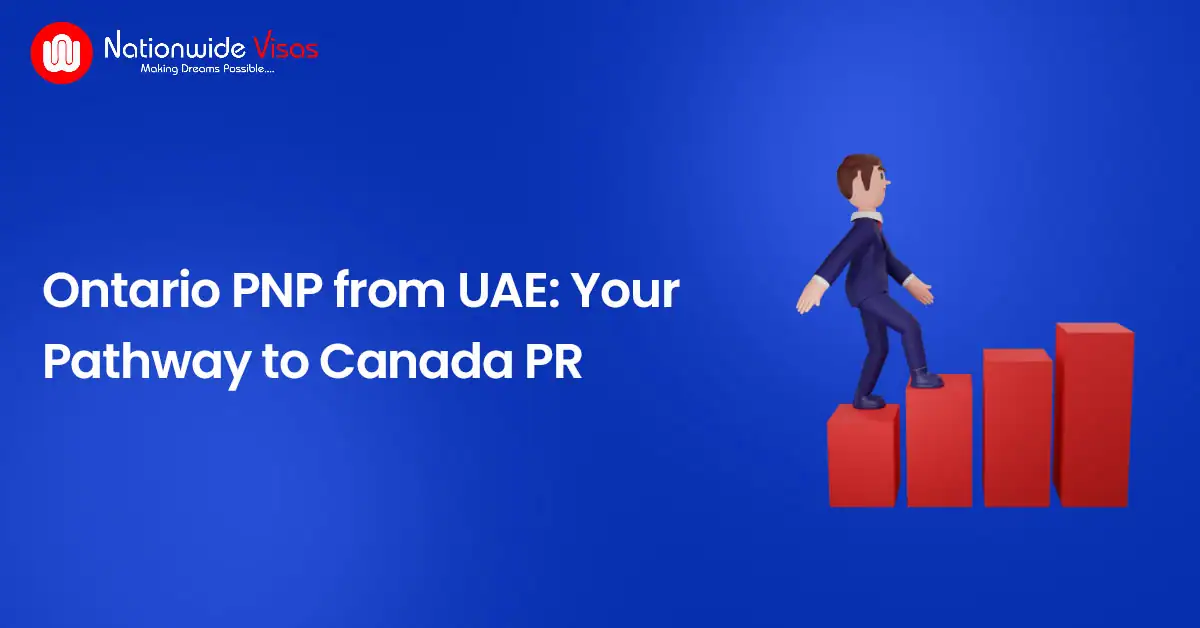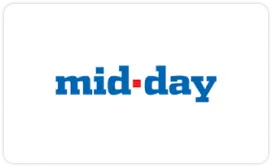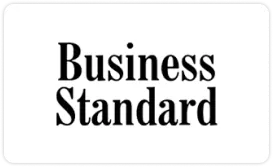Canada Immigration Levels Plan 2025-2027
Canada is all set to welcome 1.1 million new permanent residents by 2027.
The new & improved Canada Immigration Levels Plan for 2025-2027 will act as a guide, for the number of permanent residents to be welcomed over the coming three years. Under the new plan announced on October 24, 2024, Canada will look to welcome over 365,000 new permanent residents each year until 2027.
According to the plan, Canada will invite -
- 395,000 new permanent residents in 2025.
- 380,000 new permanent residents in 2026.
- 365,000 new permanent residents in 2027.
“Did you know? Canada broke an all-time immigration record by welcoming over 471,550 new permanent residents in 2023.”
Check eligibility for Canada PR
The Canada Immigration Levels Plan 2025-2027 introduces, for the first time, specific targets for international students and temporary foreign workers, marking a comprehensive approach to controlled immigration.
Both temporary and permanent residents are essential in driving economic growth, filling labour market gaps, and enriching the cultural diversity of communities across Canada, including Francophone minority communities outside Quebec.
Canada Immigration Levels Plan 2025-2027
Temporary Residents
| 2025 | 2026 | 2027 |
| Overall Arrivals | 673,650 (604,900 - 742,400) | 516,600 (435,250 - 597,950) | 543,600 (472,900 - 614,250) |
| Workers (Total) | 367,750 | 210,700 | 237,700 |
| International Mobility Program | 285,750 | 128,700 | 155,700 |
| Temporary Foreign Worker Program | 82,000 | 82,000 | 82,000 |
| Students | 305,900 | 305,900 | 305,900 |
Permanent Residents
| 2025 | 2026 | 2027 |
| Immigrant Category | Target | Low Range | High Range | Target | Low Range | High Range | Target | Low Range | High Range |
| Overall Planned Permanent Resident Admissions | 395,000
(367,000 - 436,000) | 380,000
(352,000 - 416,000) | 365,000
(338,000 - 401,000) |
Overall French-speaking
Permanent Resident Admissions
outside Quebec | 8.5%
(29,325) | 9.5%
(31,350) | 10%
(31,500) |
| Economic | Federal Economic Priorities | 41,700 | 30,000 | 62,000 | 47,400 | 30,000 | 65,000 | 47,800 | 32,000 | 65,000 |
| In-Canada Focus | 82,980 | 39,000 | 89,000 | 75,830 | 33,000 | 82,000 | 70,930 | 66,000 | 76,000 |
| Federal Business | 2,000 | 1,200 | 3,000 | 1,000 | 200 | 2,000 | 1,000 | 200 | 2,000 |
Federal Economic Pilots: Caregivers
Agri-Food; Community Immigration Pilots;
Economic Mobility Pathways Pilot | 10,920 | 6,000 | 14,800 | 9,920 | 5,300 | 14,000 | 9,920 | 5,300 | 14,000 |
| Atlantic Immigration Program | 5,000 | 4,000 | 7,000 | 5,000 | 4,000 | 7,000 | 5,000 | 4,000 | 7,000 |
| Provincial Nominee Program | 55,000 | 20,000 | 65,000 | 55,000 | 20,000 | 65,000 | 55,000 | 20,000 | 65,000 |
| Quebec Skilled Workers and Business | 34,500 | 33,000 | 50,000 | TBD | - | - | TBD | - | - |
| Regularization Public Policy | 50 | - | 250 | 100 | - | 500 | 200 | - | 1,000 |
| Total Economic | 232,150
(215,000 – 256,000) | 229,750
(214,000 – 249,000) | 225,350
(207,000 – 246,000) |
| Family | Spouses, Partners and Children | 70,000 | 65,500 | 78,000 | 66,500 | 63,000 | 75,000 | 61,000 | 58,000 | 67,500 |
| Parents and Grandparents | 24,500 | 20,500 | 28,000 | 21,500 | 16,500 | 24,500 | 20,000 | 15,000 | 22,000 |
| Total Family | 94,500
(88,500 – 102,000) | 88,000
(82,000 – 96,000) | 81,000
(77,000 – 89,000) |
| Refugees and Protected Persons | Protected Persons in Canada and Dependents Abroad | 20,000 | 18,000 | 30,000 | 18,000 | 16,000 | 30,000 | 18,000 | 16,000 | 30,000 |
| Resettled Refugees – Government Assisted | 15,250 | 13,000 | 17,000 | 15,250 | 13,000 | 17,000 | 15,250 | 13,000 | 17,000 |
| Resettled Refugees – Blended Visa Office Referred | 100 | - | 150 | 100 | - | 150 | 100 | - | 150 |
| Resettled Refugees – Privately Sponsored | 23,000 | 21,000 | 26,000 | 22,000 | 19,000 | 24,000 | 21,000 | 19,000 | 24,000 |
| Total Refugees and Protected Persons | 58,350
(55,000 – 65,000) | 55,350
(50,000 – 62,000) | 54,350
(50,000 – 60,000) |
| Total Humanitarian & Compassionate and Other | 10,000
(8,500 – 13,000) | 6,900
(6,000 – 9,000) | 4,300
(4,000 – 6,000) |
| Immigrant Category | | 2024 | 2025 | 2026 |
| Target | Low Range | High Range | Target | Low Range | High Range | Target | Low Range | High Range |
| Overall Planned
Permanent Resident Admissions | 485,000 | 430,000 | 532,500 | 500,000 | 442,500 | 550,000 | 500,000 | 442,500 | 550,000 |
|---|
| Overall French-speaking Permanent Resident Admissions outside Quebec | 26,100 | - | - | 31,500 | - | - | 36,000 | - | - |
|---|
| Economic | Federal High Skilled | 110,770 | 90,000 | 116,000 | 117,500 | 96,500 | 124,000 | 117,500 | 96,500 | 124,000 |
|---|
| Federal Economic Public Policies | - | 0 | 3,000 | - | - | - | - | - | - |
|---|
| Federal Business | 5,000 | 3,500 | 7,000 | 6,000 | 4,000 | 8,000 | 6,000 | 4,000 | 8,000 |
|---|
Economic Pilots
| 10,875 | 6,500 | 14,500 | 14,750 | 9,000 | 19,750 | 13,750 | 9,000 | 19,750 |
|---|
| Atlantic Immigration Program | 6,500 | 4,000 | 9,000 | 8,500 | 5,000 | 13,000 | 8,500 | 5,000 | 13,000 |
|---|
| Provincial Nominee Program | 110,000 | 105,500 | 117,000 | 120,000 | 113,000 | 130,000 | 120,000 | 113,000 | 130,000 |
|---|
| Quebec Skilled Workers and Business | To be determined | To be determined | To be determined |
|---|
| Total Economic | 281,135 | 250,000 | 305,000 | 301,250 | 265,000 | 326,000 | 301,250 | 265,000 | 326,000 |
|---|
| Family | Spouses, Partners and Children | 82,000 | 77,000 | 88,000 | 84,000 | 79,000 | 90,000 | 84,000 | 79,000 | 90,000 |
|---|
| Parents and Grandparents | 32,000 | 27,000 | 36,000 | 34,000 | 29,000 | 42,000 | 34,000 | 29,000 | 42,000 |
|---|
| Total Family | 114,000 | 105,000 | 130,000 | 118,000 | 107,000 | 135,000 | 118,000 | 107,000 | 135,000 |
|---|
| Refugees and Protected Persons | Protected Persons in Canada and Dependents Abroad | 27,000 | 24,000 | 38,000 | 29,000 | 26,000 | 40,000 | 29,000 | 26,000 | 40,000 |
|---|
| Resettled Refugees – Government Assisted | 21,115 | 16,750 | 26,000 | 15,250 | 12,000 | 17,000 | 15,250 | 12,000 | 17,000 |
|---|
| Resettled Refugees – Privately Sponsored | 27,750 | 20,000 | 31,000 | 28,250 | 23,000 | 32,000 | 28,250 | 23,000 | 32,000 |
|---|
| Resettled Refugees – Blended Visa Office-Referred | 250 | - | 400 | 250 | - | 400 | 250 | - | 400 |
|---|
| Total Refugees and Protected Persons | 76,115 | 66,000 | 93,000 | 72,750 | 64,000 | 80,000 | 72,750 | 64,000 | 80,000 |
|---|
| Humanitarian & Compassionate | Total Humanitarian & Compassionate and Other | 13,750 | 9,000 | 17,500 | 8,000 | 6,500 | 12,000 | 8,000 | 6,500 | 12,000 |
|---|
| Immigrant Category | 2023 | 2024 | 2025 |
| Target | Low Range | High Range | Target | Low Range | High Range | Target | Low Range | High Range |
| Overall Planned
Permanent Resident
Admissions | 465,000 | 410,000 | 505,000 | 485,000 | 430,000 | 542,500 | 500,000 | 442,500 | 550,000 |
| Economic | Federal High Skilled | 82,880 | 67,750 | 88,000 | 109,020 | 89,500 | 115,750 | 114,000 | 93,500 | 121,000 |
| Federal Economic Public Policies | 25,000 | 19,500 | 32,750 | - | - | - | - | - | - |
| Federal Business | 3,500 | 2,350 | 4,000 | 5,000 | 3,500 | 7,000 | 6,000 | 4,000 | 8,000 |
| Economic Pilots: Caregivers | 8,500 | 4,650 | 10,800 | 12,125 | 6,750 | 16,125 | 14,750 | 9,000 | 19,750 |
| Atlantic Immigration Program | 8,500 | 3,000 | 8,800 | 11,500 | 6,000 | 12,500 | 14,500 | 8,500 | 16,500 |
| Provincial Nominee Program | 105,500 | 91,000 | 110,000 | 110,000 | 105,500 | 120,000 | 117,500 | 112,000 | 129,250 |
| Quebec Skilled Workers and Business | See the Quebec immigration plan | To be determined | To be determined |
| Total Economic | 266,210 | 233,000 | 277,250 | 281,135 | 250,000 | 305,000 | 301,250 | 265,000 | 326,000 |
| Family | Spouses, Partners and Children | 78,000 | 72,000 | 84,000 | 80,000 | 75,000 | 86,000 | 82,000 | 77,000 | 88,000 |
| Parents and Grandparents | 28,500 | 25,000 | 38,000 | 34,000 | 29,000 | 45,000 | 36,000 | 30,750 | 48,000 |
| Total Family | 106,500 | 100,000 | 118,000 | 114,000 | 105,000 | 130,000 | 118,000 | 107,000 | 135,000 |
| Refugees and Protected Persons | Protected Persons in Canada and Dependents Abroad | 25,000 | 22,000 | 35,000 | 27,000 | 24,000 | 38,000 | 29,000 | 26,000 | 35,000 |
| Resettled Refugees - Government-Assisted | 23,550 | 18,500 | 30,000 | 21,115 | 16,750 | 26,000 | 15,250 | 12,000 | 17,000 |
| Resettled Refugees - Privately Sponsored | 27,505 | 20,000 | 29,000 | 27,750 | 22,000 | 29,500 | 28,250 | 23,000 | 30,000 |
| Resettled Refugees - Blended Visa Office-Referred | 250 | - | 400 | 250 | - | 400 | 250 | - | 400 |
| Total Refugees and Protected Persons | 76,305 | 66,000 | 93,000 | 76,115 | 66,000 | 93,000 | 72,750 | 64,000 | 80,000 |
| Humanitarian & Compassionate and Other | Total Humanitarian & Compassionate and Other | 15,985 | 11,000 | 16,750 | 13,750 | 9,000 | 14,500 | 8,000 | 6,500 | 9,000 |
| French‑speaking immigration admissions necessary to meet 2023 objective in Francophone Immigration Strategy | 15,862 | 19,910 | |
| Immigration Category | Category | 2021 | 2022 | 2023 |
| | | Target | Low Range | High Range | Target | Low Range | High Range | Target | Low Range | High Range |
| | Overall Planned Permanent Resident Admissions | 401,000 | 300,000 | 410,000 | 411,000 | 320,000 | 420,000 | 421,000 | 330,000 | 430,000 |
| Economic | Federal High Skilled | 108,500 | 81,000 | 110,250 | 110,500 | 96,250 | 112,900 | 113,750 | 100,000 | 114,500 |
| Federal Business | 1,000 | 400 | 1,250 | 1,000 | 250 | 1,250 | 1,000 | 500 | 1,250 |
| Economic Pilots: CaregiversAgri-Food Pilot; Rural and Northern Immigration Pilot | 8,500 | 4,900 | 9,250 | 10,000 | 4,500 | 10,500 | 10,250 | 4,500 | 11,000 |
| Atlantic Immigration Pilot Program | 6,000 | 3,300 | 6,250 | 6,250 | 3,000 | 6,750 | 6,500 | 3,500 | 6,750 |
| Provincial Nominee Program | 80,800 | 64,000 | 81,500 | 81,500 | 63,600 | 82,500 | 83,000 | 65,000 | 84,000 |
| Quebec Skilled Workers and Business | See the Quebec immigration plan | To be determined | To be determined |
| Total Economic | 232,500 | 180,500 | 237,000 | 241,500 | 199,000 | 247,000 | 249,500 | 207,000 | 253,500 |
| Family | Spouses, Partners and Children | 80,000 | 61,000 | 81,000 | 80,000 | 60,000 | 81,000 | 81,000 | 60,000 | 82,000 |
| Parents and Grandparents | 23,500 | 15,000 | 24,000 | 23,500 | 14,000 | 24,000 | 23,500 | 14,000 | 24,000 |
| Total Family | 103,500 | 76,000 | 105,000 | 103,500 | 74,000 | 105,000 | 104,500 | 74,000 | 106,000 |
| Refugees and Protected Persons | Protected Persons in Canada and Dependents Abroad | 23,500 | 17,000 | 25,000 | 24,500 | 19,000 | 25,000 | 25,000 | 19,500 | 25,500 |
| | Resettled Refugees - Government-Assisted | 12,500 | 7,500 | 13,000 | 12,500 | 7,500 | 13,000 | 12,500 | 8,400 | 13,000 |
| | Resettled Refugees - Privately Sponsored | 22,500 | 14,900 | 23,000 | 22,500 | 15,400 | 23,000 | 22,500 | 15,500 | 23,000 |
| | Resettled Refugees - Blended Visa Office-Referred | 1,000 | 100 | 1,000 | 1,000 | 100 | 1,000 | 1,000 | 100 | 1,000 |
| | Total Refugees and Protected Persons | 59,500 | 39,500 | 62,000 | 60,500 | 42,000 | 62,000 | 61,000 | 43,500 | 62,500 |
| Humanitarian and Other | Total Humanitarian & Compassionate and Other | 5,500 | 4,000 | 6,000 | 5,500 | 5,000 | 6,000 | 6,000 | 5,500 | 8,000 |
A Reduction In Immigration Targets
The Canada Immigration Levels Plan 2025-2027 shows a reduction in immigration targets for both permanent and temporary residents over the next three years. These changes come as Canada aims to balance its immigration levels with economic and social demands.
Permanent Resident Targets Reduced
The updated Immigration Levels Plan sets lower targets for permanent residents. In 2025, Canada aims to welcome 395,000 permanent residents, down from 485,000 in 2024. The target further decreases to 380,000 in 2026 and 365,000 in 2027. However, the focus on economic immigration is strong, with only a 17% reduction in the economic immigrant target, which will be 232,000 in 2025. More than 40% of these economic immigrants are expected to come from temporary residents already living in Canada.
Scaling Back Provincial Nominee Program (PNP)
Targets for the Provincial Nominee Program (PNP) have also been cut by about 50%. The new target is 55,000 admissions per year for 2025, 2026, and 2027. In contrast, the federal high-skilled programs managed through the Express Entry Program will see an increase, starting at 124,680 in 2025.
Support for French-Speaking Immigrants
The federal government is also committed to increasing the number of French-speaking immigrants settling outside Quebec. The target for French-speaking admissions will rise to 8.5% (approximately 29,325) in 2025, 9.5% (31,350) in 2026, and 10% (31,500) in 2027. This effort aims to support the integration of French-speaking individuals into various communities across Canada.
.webp-11730186312.webp)
Temporary Residency Plans
The government aims to further reduce the percentage of temporary residents in Canada’s overall population from 7% to 5% by the end of 2026. There will be a significant decrease in work permits, particularly under the International Mobility Program, which will drop from 285,750 permits in 2025 to just 128,700 in 2026. The target for student permits will stay at 305,900 per year.
New Study Permit Caps
The cap on Canada Study Visas which was first introduced in January 2024, limited new admissions to 360,000 for undergraduate and college students. This policy, initially temporary, will now be permanent. It will also apply to Master's and PhD students to ensure better control over international student numbers.
Post-Graduation Work Permit Changes
The government also made recent changes to the Post-Graduation Work Permit (PGWP) program earlier this year. International college graduates will need a Canadian Language Benchmark (CLB) level of 5 to qualify for a PGWP, while university graduates must have a CLB level of 7. Graduates must complete programs that are aligned with in-demand jobs to be eligible for a PGWP. Additionally, spouses of master's program graduates will now need to have at least an 18-month program to qualify for an open work permit.
Reforms to the Temporary Foreign Worker Program (TFWP)
As part of the new changes, the government has also limited work permits in the low-wage stream to a maximum of one year, down from the previous limit of two years. The number of permits issued under the TFWP will remain flat at 82,000 per year for the next three years. This aims to ensure better working conditions for foreign workers while maintaining the integrity of the program.
These drastic changes show Canada’s commitment to responsible immigration that supports the economy while addressing challenges like housing and job availability. Despite the reductions, the targets for 2025 remain higher than pre-pandemic levels.
Next Steps
- STEP 1: Review the tables for insights into the Canada Immigration Levels Plan 2025-2027.
- STEP 2: Find suitable options (temporary/permanent) and choose your visa type.
- STEP 3: Get in touch with immigration consultants at Nationwide Visas to start your process.
Book a Free Consultation
How Nationwide Visas Can Help You?

CICC
Registered

Hand Holding
Support

True &
Transparent

Process Time
9-12 Months
We at Nationwide Visas have assisted thousands of individuals to successfully Immigrate To Canada with their families through the Express Entry Program. Our qualified and experienced Immigration Experts are equipped with the proficiency to accurately assess your case and advise the most suitable course of action for best serving your needs.
Nationwide Visas has accumulated a treasure of goodwill and exhaustive experience over the last 17+ years in this dynamic immigration industry and has constantly facilitated a wide range of aspiring immigrants to achieve their overseas goals.
We are among the top-most brands in the Immigration sector being a highly reliable immigration firm with an outstanding track record of several thousands of triumphant PR Visa applications. The following major factors make us the Best Immigration Consultant for a Canada PR Visa:
Our Consultation is offered by authorized and licensed Immigration Consultants
Step-by-Step guidance through eligibility and process
We maintain a Secure Online Process & transparency
System of Complaint Redress for any process
Experience of having processed more than 30,000 applications
Every Case is assessed multiple times before submission
Easy evaluation of the qualifications and other skills
Canada’s New Strategy to Improve Immigration System
Get a call within 55 seconds

.webp-11730186312.webp)































.webp-871750497236.webp)